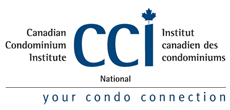Part 53 published on 01/02/16
Various common element projects fell within the board’s repair and maintenance mandate; owner involvement not necessary
The Board arranged a number of projects without seeking prior approval of the owners. The projects were as follows:
Changing the existing wood balcony guards with vinyl siding to a tempered glass/ballast system;
- Changing existing windows, which were a combination of sliders, casement and fixed windows, to vinyl awning windows;
- Changing the existing asphalt shingles to pre-finished steel roofing;
- Changing the existing brick and vinyl cladding to a combination of brick, stone and stucco; including the installation of a product known as Kerlite;
- Changing the existing electric forced heating units in the hallways to gas-fired units;
- Renovations to the interior lobby areas.
One of the owners sought a declaration that these projects required owner involvement under section 97 of the Condominium Act.
The Court held that owner involvement was not required, as all of the work fell within the board’s repair and maintenance responsibilities, even when the result had a different, more contemporary, esthetic appearance. The Court said:
It is significant to note that, according to the Act, if a repair or maintenance work is not an “addition, alteration, or improvement” then sections 97(3), 97(4) and 97(6) have no application. Meaning, the board has an obligation to complete the repair and maintenance work without providing notice, and without the owners’ approval.
…
The courts have held that replacement of “old”, “defective” or “worn out” common elements with “new”, “improved” or “up-graded” material, equipment or design still constitutes “repair and maintenance”, and this is so even when the result has a different, more contemporary, esthetic appearance.
